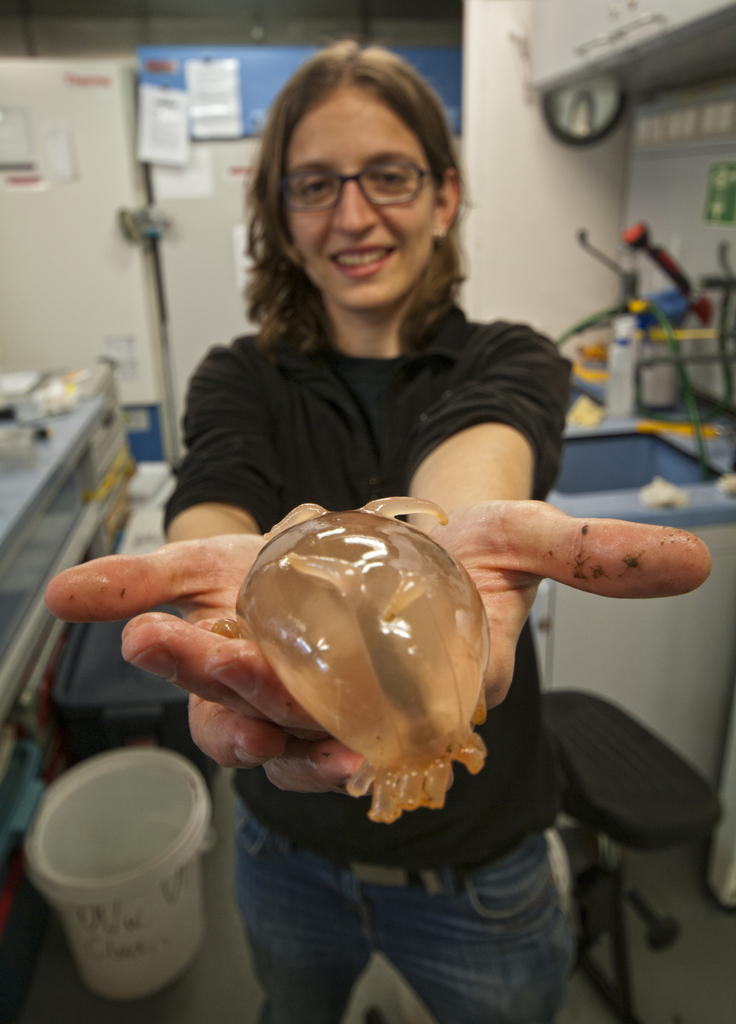The sea pigs of the Scotoplanes genus are very strange holothuroideans that can be found at the bottom of the ocean. They are firm friends of juvenile king crabs, which have been seen “surfing” sea pigs swimming through the water column.
Sea pigs hanging out with king crabs was an observation first made by Monterey Bay Aquarium Research Institute (MBARI) marine biologists piloting Doc Ricketts, the remotely operated vehicle (ROV). They had sent the ROV down to see what marine life had made a home for itself in a sunken shipping container, but were surprised to find lots of small crabs hitchhiking on the backs and bellies of sea pigs.
To see if king crabs surfing sea pigs was a widespread behavior, they reviewed footage of 2,600 Scotoplanes and found that around a quarter were carrying crabs. They were mostly juvenile king crabs, Neolithodes diomedeae, that were around 1.4 centimeters (1.5 inches) across.
Reviewing observations of juvenile king crabs at sea pig depth revealed that 96 percent of them were riding on Scotoplanes – but they were often very hard to spot, being so small in size and often riding on the pigs’ underbellies. This could indicate that the behavior is an effective strategy for evading predators because if it’s hard for nosy humans to see you, it’s probably not that easy for fish either.
King crabs need protection in their youth because there’s nowhere to hide or burrow on the abyssal plains where the Scotoplanes represent “the largest benthic structure available as shelter,” said the MBARI researchers. They are also particularly vulnerable following a molt, as their bodies are soft for a short period, making them a very convenient snack for predatory fish – or cannibalistic king crabs.
Fortunately, at depths of 1,000 to 6,000 meters (3,300 to 19,500 feet), trawls of sea pigs can be found in large groups, with as many as 600 individuals having been observed by ROVs.

These peculiar deep-sea blobs get even more blob-like when they’re brought to the surface.
These walking shields are therefore a valuable hiding place, and acting like accommodation for other marine critters is something the sea cucumbers are quite famous for. Who could forget the strange tenancy agreement that’s been forged between these “walking colons” and pearlfish, who will swim eagerly into their open anal sphincters to seek sanctuary inside their rectums? This is also something that remoras are partial to doing to whale sharks.
Sea pigs arguably have it easy simply carrying the crabs on their backs, then, but it’s also possible they glean some benefit from the relationship as the crabs may clear them of parasites.
Cannibalistic crabs surfing sea pigs – who’d have thought it?
Source Link: Say Hello To The Sea Pig, A Peculiar Blob That Lives 6,000 Meters Below The Sea